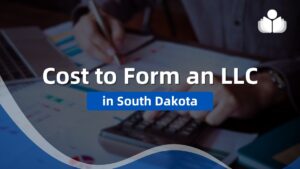© Copyright Carter McNamara, MBA, PhD, Authenticity Consulting, LLC.
Adapted from the Field
Guide to Nonprofit Program Design, Marketing, and Evaluation.
Applies to for-profits unless otherwise noted.
Sections of This Topic Include
- Introduction — What’s a Program? (includes definitions of key terms)
- 6 Cornerstones for Solid Program Planning
- 8 Guidelines to Keep Program Planning on Track
- Program Direction: Goals and Objectives
- Program Process (Process, Resources and Budget)
- Program Evaluation
- Additional Resources
Also, consider
Related Library Topics
Introduction — What’s a Program?
Varying Uses of the Term “Program”
There are a wide variety of uses of the term “program” in organizations. In its most general use, a program is a collection of organizational resources that are geared to accomplish a certain major goal or set of goals. (For those of you who read Organizations (an Introduction), you’ll recognize that this definition of a program sounds like that of an organization and a system. A program is an organization and a system.)
For-profits often use the term for very large business efforts that have limited duration and a defined set of deliverables. Or, a program might refer to an ongoing set of activities internal to the organization, for example, a Total Quality Management Program, Workplace Safety Program, Space Program, etc.
(Program planning is usually (but not always) of a broader scope than Project Planning.)
Varying Uses of the Term “Program”
There are a wide variety of uses of the term “program” in organizations. In its most general use, a major program is a collection of organizational resources that are geared to accomplish a certain major goal or set of goals. (For those of you who read Organizations (an Introduction), you’ll recognize that this definition of a program sounds like that of an organization and a system. A program is an organization and a system.)
Keeping Overall Perspective: Programs are Systems
Programs, like other organizations, can seem a highly confusing, amorphous mass that is very hard to comprehend. It can be hard to keep perspective. However, like an organization, a program is a system with inputs, processes, outputs (tangibles), and outcomes (impacts on customers) — with ongoing feedback among the parts. This systems perspective helps keep clarity about programs and will help a great deal during program planning.
Program inputs are the various resources needed to run the program, e.g., money, facilities, customers
(internal or external), employees, etc. The process is how the program’s products are delivered, e.g., products are provided to internal or external customers (internal or external), customers (internal or external) are served, etc. The outputs are the units of service, e.g., the number of customers (internal or external) served.
Outcomes are the impacts on the customers (internal or external) who are receiving the products, e.g., increased quality of products for customers (internal or external), enhanced safety in the workplace for internal customers (internal or external), enhanced mental health for customers (internal or external), etc.
6 Cornerstones for Solid Program Planning
With these cornerstones in place, the organization is assured of a program plan that has a strong foundation and can survive multiple changes as the program develops.
The program Should Tie to the Organization’s Mission
Each program should be strongly associated with the organization’s overall mission. That is, the organization’s executive leaders should work from the mission to identify several overall, major goals that must be reached and that, in total, reach the mission. If an idea for a program comes up at some time other than during strategic planning, executive leaders must ask themselves if the program is really appropriate for the organization.
Program Planning Should Tie in With Strategic Planning
Depending on the nature of the organization, strategic planning typically includes a review of the organization’s vision, mission, values, overall strategic issues and strategic goals (each of which, in some organizations, becomes a program) and strategies to reach the goals (strategies to reach the goals often are the roadmap for how the program meets its own goals).
Because the program planning must be tied to the nature of the organization’s mission, the program planning should be closely tied to the organization’s strategic planning as well. Typically, at a point right after the strategic planning process has identified strategic goals and issues, a team of planners can draft a framework for how goals can be met. This framework is often the roadmap for a new program. (For more information about strategic planning, see Strategic Planning.)
(Note that programs should not be ongoing means to fix problems in the organization — otherwise, they become just that: ongoing, costly means to fix problems in the workplace.)
Involve the Board (relevant to corporations)
A major responsibility of a board is to set strategic direction for the corporation. The corporation’s board should be highly involved in authorizing and guiding the initial direction of programs. Therefore, boards should be involved in the strategic planning of programs. (Admittedly, many experienced chief executives might argue that they actually drive the board to conduct strategic planning.
Many experienced chief executives, consultants, and other practitioners believe that ultimately, it’s the working relationship of the board and chief executive that determines the success of a corporation.)
Conduct Program Planning as a Team
The chief executive, key planners, relevant middle managers, and major customers (internal or external) should be involved in program planning. (“Relevant middle managers” are those who lead programs or other departments that will integrate or coordinate with the new program being planned.)
Often, initial plans for a program are suggested to the chief executive and middle managers. Program planning is often initiated as part of the organization’s overall strategic planning process and so is conducted by the strategic planning team, which should be comprised of the board (in corporations), the chief executive, employees, and key customers (internal or external), as much as possible.
Planning Should Involve Potential Internal/External Customers as Much as Possible
One can embark on a wonderful program planning process with all the right parts, but if key customers (internal or external) aren’t involved to provide perspectives from the program user’s point of view, the organization may build a beautiful ladder — but on the wrong roof. Involve customers (internal or external) in initial ideas about a program, discuss your perceived unmet need among those customers (internal or external), and ask how they would like the need to be met.
You might run a final draft of your program plan past a couple of key customers (internal or external). (Note that this involvement of customers (internal or external) is a critical aspect of the marketing process. For more about marketing, see Marketing (research, pricing, competitor analysis, etc.).)
Don’t worry About Developing the Perfect Program Plan
If the organization involves the right people, and if everyone participates wholeheartedly and reflects on their experiences, then the organization will develop the “perfect” plan. The organization remains the only real “expert” on their own planning. Outside consultants and facilitators can be brought in, but each planning decision is ultimately up to the organization members. The “perfect” program plan will meet the nature and needs of the organization.
8 Guidelines to Keep Program Planning on Track
Basically, planning is taking one’s best shot at working through a “tree” of decisions (decisions that must be made at some time, and the earlier the better) to propose (and often get /invest/funding for) developing a program. Your plan doesn’t have to be perfect and, like any plan, it isn’t a rule, rather it’s a set of guidelines that serve as a reference for the future.
You can change your plans — just know why and be able to explain (e.g., to your board, chief executives,
and investors) why you changed the plans. This planning effort is almost always more than personnel wants to undertake but is almost always less than they fear. Anyway, this planning effort is required if the organization plans to pursue investment/funding.
The following guidelines will help ensure the program planning process points in the right direction and will help ensure the resulting program is run effectively and efficiently. (For more information about
planning, see General Planning Process.)
Focus on Results/Outcomes
Results/outcomes are benefits to customers (internal or external) from the program. Outcomes are usually in terms of solutions, enhanced learning (knowledge, perceptions/attitudes, or skills), or conditions, e.g., increased productivity. Outcomes are often confused with program outputs or units of services, e.g., the number of customers (internal or external) served by the program.
Examine Your Intended Results/Outcomes – Conduct Some Basic Marketing
It’s critical to verify that these planned results/outcomes are indeed useful to your customers (internal or external). Many people mistakenly believe that marketing is selling a product or idea — selling is only part of marketing. Sound marketing includes researching a market to identify its needs or to assess if an idea you already have is really needed by that market.
(A market is a group of people or organizations that may buy or need your program’s results/outcomes). Basically, you’re verifying there’s a group of customers (internal or external) who are interested in, or even better, really need your planned product.
Marketing also includes working with customers (internal or external) to identify how they prefer to have the product delivered. Marketing gives a strong impression of how much they’re willing to accept or pay for this product/service — or what to set the price at for the product/service.
Marketing also involves promoting and advertising the product/service to internal or external customers.
For more information about marketing, see Marketing (research, pricing, competitor analysis, etc.).)
Coordinate the New Program with Other Current Programs
So often, in the excitement of the birth of a new program, we ignore precious resources that already exist. The new program is but part of an overall organization, an overall system. Pay particular attention to how the new program will coordinate with other programs in the organization.
What inputs are needed from other managers and other programs? What ongoing feedback is needed among members of the new program and other programs? How can the new program benefit other programs?
Explore if Results Can Be Delivered More Effectively via Collaboration
Successful collaboration brings two or more organizations together to work in synergy, in an effort that is “more than the sum of its parts.” That is, if both organizations worked apart, both would serve customers (internal or external) and produce some solutions/outcomes — but not as many and as well as if both organizations worked together. In working together, there’s an economy of scale, or sharing of resources, that lowers costs and focuses more resources on serving customers.
Plan Key Indicators of Program Success
These planned indicators will help you establish whether the program is successful or not and will help you avoid doing a program for the sake of a program. Consider planning indicators associated with intended results/outcomes. Programs are usually defined with very explicit deliverables.
If you struggle with identifying key indicators of success, then imagine the program operating in a highly successful manner at some time in the future. Then describe what features of the program indicate that the program is successful.
Include Short-Range Focus in a Long-Range Plan
Getting the program off on the right foot includes not falling over your own feet because you were looking far off into the distance. Many strategic plans are usually three years in scope, with particular planning focus on the first year of the three years. Follow this format for the program planning as well.
Don’t worry about exhaustive detail even in the first year of the plan. Plans are guidelines, not rules. Plans can be changed — but understand why you changed them.
Learn by “Testing the Waters”
Consider planning a short-term “pilot” program. The pilot will be a sort of mini-program that will reflect many of the aspects of a full-blown program. However, planning and operations regarding the pilot will include numerous reviews and assessments from which to learn from experiences around the pilot program.
This learning will go into planning for the full-blown program. Note that investors are often highly cooperative in supporting pilots as an approach to research or verify the organization’s proposed plans.
Plan Program Reviews
Program reviews are regular examinations of the program’s activities to assess how well the program is doing. A program review team should probably include the chief executive, the head of the new program, and one or two other program directors, particularly those from programs that closely coordinate with the new program.
Examine if the program seems to be following the original plan. If it’s not, the deviation is not as important as understanding why and assessing if the deviation was necessary. Take a look at the key indicators as noted in the plan.
What is the progress toward the key indicators? What major problems exist and what is needed to address them? How are the actual costs compared to the planned costs? Are any actions needed to avoid financial problems? What would you do differently about the program if you could do anything? What limitations are holding you back from what you would ideally do if you could? What are you learning from the program implementation so far?
Program Direction: Goals and Objectives
Program Goals
Program goal(s) should come from and be closely associated with the organization’s overall strategic goals. Think about what, e.g., three to five major accomplishments must be reached to attain each overall goal. Goals are an overall status to be reached through continued efforts in the program. Goals should be described such that the organization can assess whether it’s reached the goal or not.
The goal should establish a clear direction for the organization and portray that direction to others. The program’s goal may be to fix a problem or meet a need among customers (internal or external) — not to fix a problem in your organization.
For example, if you are just starting out to develop a new program, typical overall goals might include:
develop employees, pilot services to one group of customers (internal or external), evaluate the program process and finalize the program process based on evaluation results.
Program Objectives
Think about each goal and what sub-goals, or objectives, you need to accomplish to reach that goal. (Depending on your nature, it may work to instead think of how the program process will be carried out and then identify specific milestones, or objectives, in carrying out the process. This approach is somewhat like the reverse of thinking about goals and associating objectives.)
Objectives should be worded such that one can rather easily discern if it’s been reached or not. They should specify who is going to do what to whom and when and how much.
For example, referring to the above goals, associated objectives might be: recruit employees, train
them, obtain facilities and equipment, install the equipment, develop advertising materials, distribute the materials, recruit customers (internal or external) for the pilot, develop procedures for delivery of products/services, deliver products/services over a fixed period of time, conduct evaluation of the program’s process and results/outcomes, generate recommendations from the evaluation, update policies and procedures in the program’s process, and update the overall program plan.
Program Process, Resources, and Budget
Program Process
By now, establishing the program’s process should be quite straightforward and depend mostly on the nature of the product/service provided by the program. Program planners’ thoughts about the processes needed to reach each of the program objectives (above) often culminate in the overall program process as well.
After documenting the planned general process for the program, take time to reflect on whether that process will really accomplish the results/outcomes you set out to accomplish for your customers (internal or external).
Program Resources and Budget
Examine the program’s process to the extent that you can associate what resources are needed to carry out that process. Consider personnel costs (salaries and wages, fringe benefits, consultants), training, space, equipment purchase or rental, travel, copier, telephone, general office supplies, etc.
Develop a program budget by estimating the cost for each resource identified above. Note that this budgeting activity is almost always required in a proposal if the organization wants to find an investor for the new program.
Program Evaluation
Programs should be evaluated on at least a yearly basis to discern if the programs are reaching their goals, achieving their outcomes, and if they are doing so in an efficient manner. Small businesses seldom have the resources to conduct evaluations of a program’s goals, outcomes, and process.
However, they can think about where they have the most concerns about a program and then gear an evaluation to look at that aspect of the program.
Program evaluation holds numerous advantages. It can verify or increase the results/outcomes of customers (internal or external). It can fine-tune the delivery of program services, which, in turn, saves costs and time. Evaluations often provide wonderful testimonials that can be used for public relations and the credibility of the program.
In fact, evaluations are often used by program planners to ensure that the program is indeed carrying out the original process planned for the program in the first place. Often, the program plan ends up changing dramatically over time as program employees are overcome by events.
Program processes can naturally deviate from the original plan because program plans were flawed in the first place, the program’s environment changed a great deal, or program employees simply found a much
better way to deliver products/services to customers (internal or external). For more information about program evaluations, their planning, and how to carry them out, see Program Evaluation, including the Program Evaluation Planning Checklist.
Additional Resources
For the Category of Program Management:
To round out your knowledge of this Library topic, you may want to review some related topics, available from the link below. Each of the related topics includes free, online resources.
Also, scan the Recommended Books listed below. They have been selected for their relevance and highly practical nature.
 Sections of this topic
Sections of this topic
















